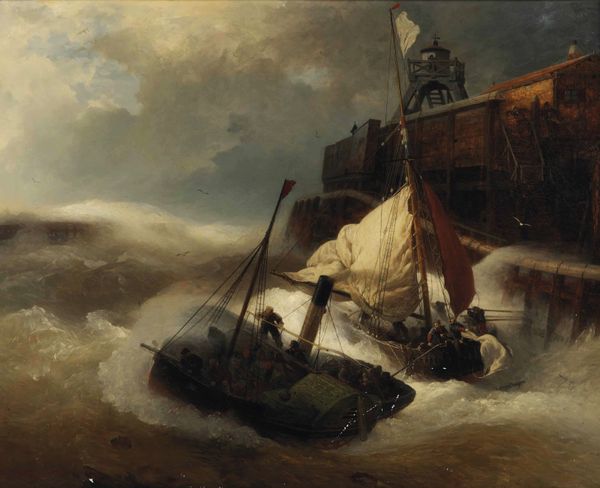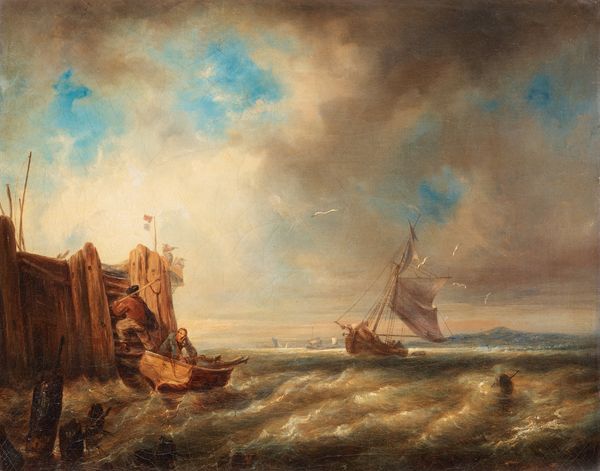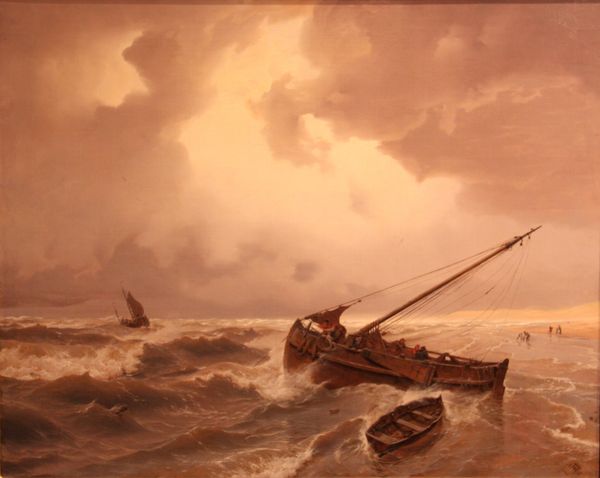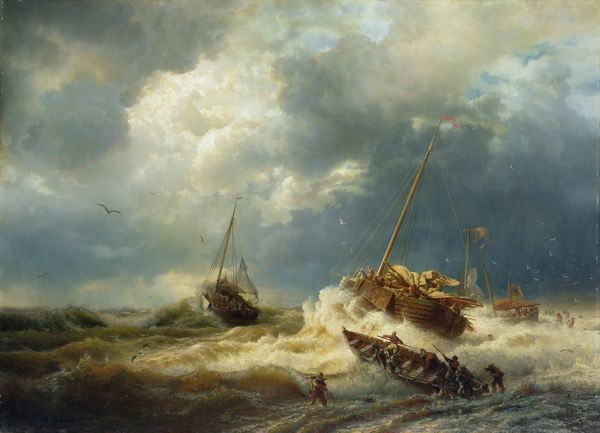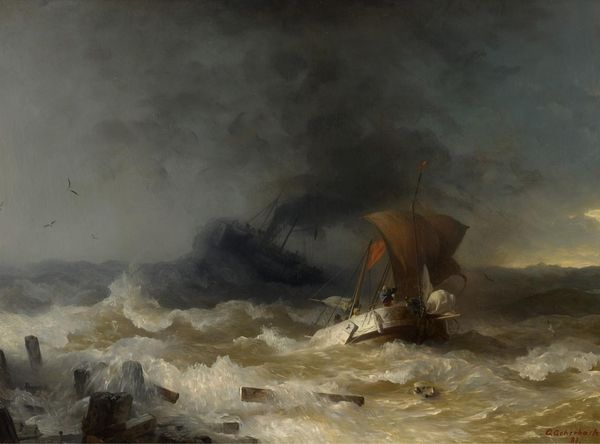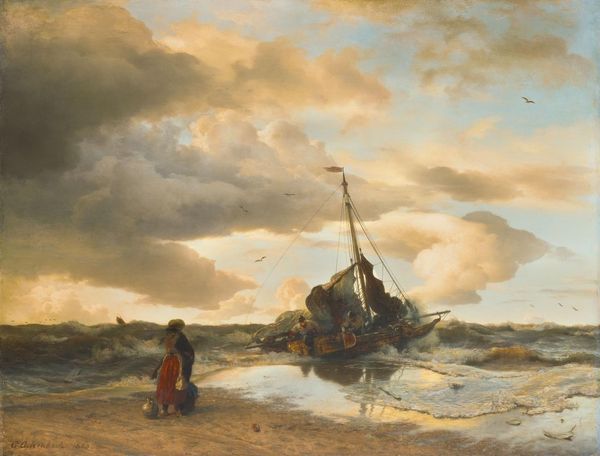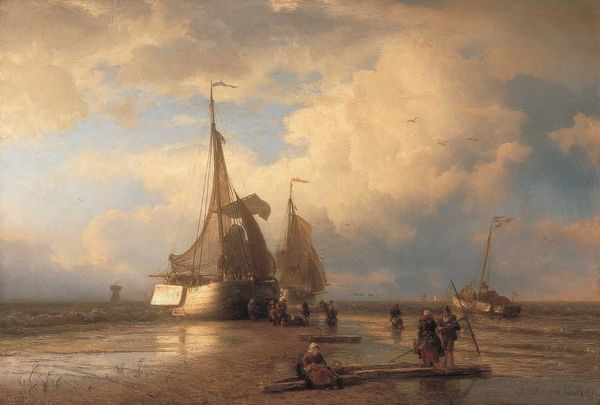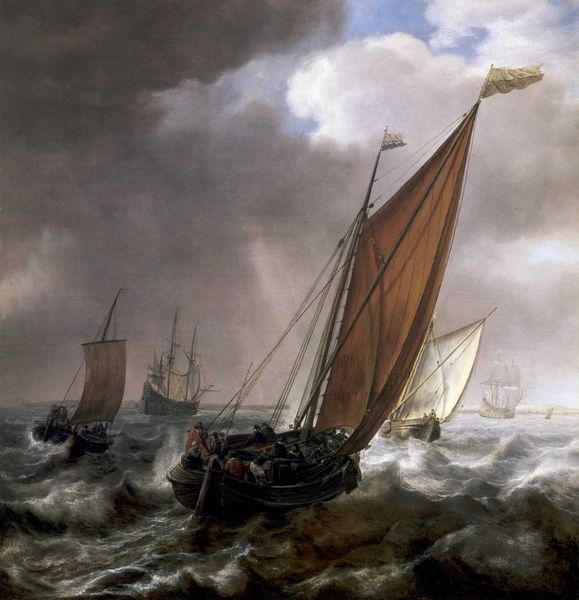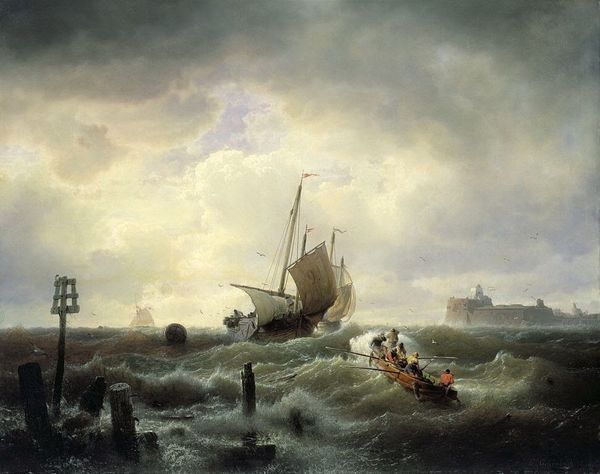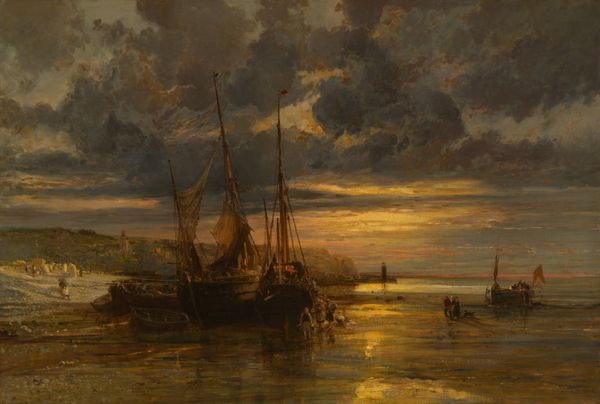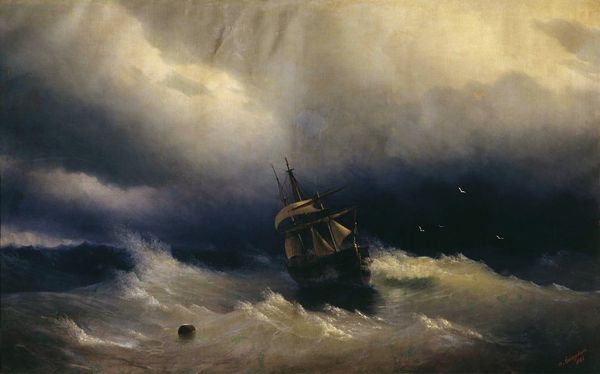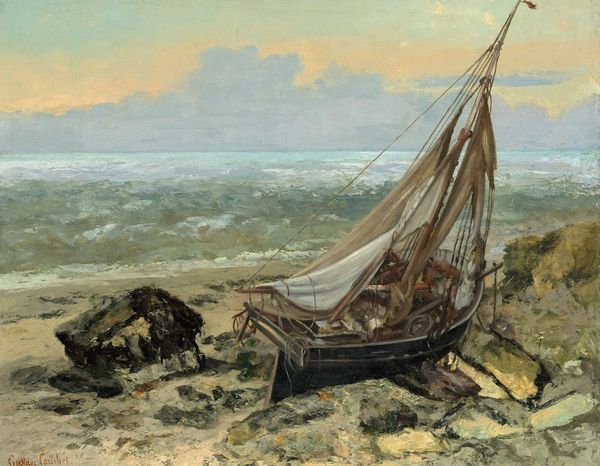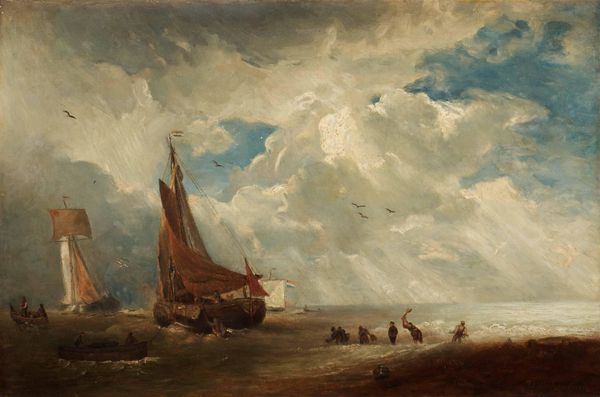
painting, oil-paint
#
water colours
#
dutch-golden-age
#
painting
#
oil-paint
#
vehicle
#
landscape
#
oil painting
#
water
#
genre-painting
#
realism
Copyright: Public domain
Curator: Here we have Andreas Achenbach's "Landing of the Fishing Boats," an oil painting completed in 1889. It’s a scene that tries to capture the everyday lives of those at sea. What's your immediate reaction to it? Editor: Bleak beauty, isn't it? It’s all gray-gold gloom and grit. You can almost smell the salt and feel that North Sea wind cutting right through you. It's rough out there. Curator: Achenbach was really attempting to show that roughness. Seascapes like these gained popularity for their picturesque qualities, but also as symbols of labor and national identity. These fishing boats were lifelines. Editor: Lifelines indeed, braving stormy waters just to bring home supper. The realism of the moment gets me—that small figure pulling the boat in; are they attached to each other? Curator: Perhaps symbolically. Paintings like this reflected the Dutch Golden Age, but were updated to comment on a contemporary social fabric that relied heavily on maritime industries and the lives dependent upon it. Editor: It's wild how a scene so specific becomes timeless. You see the effort, the cooperation etched into the very waves and those figures trying to work in harmony. It speaks to something universal. Do you think a contemporary artist would embrace something similar now? Curator: They might, but their focus could shift toward examining how globalization affects such communities or the environmental impact of maritime activities. Achenbach highlighted labor and national pride during a time of relative expansion, which would certainly change if recreated today. Editor: It is sobering to think about, but inspiring to find art reflecting, documenting, or asking similar questions now or in the future. It almost asks that, as viewers, we don't let the history it shares fade from our awareness. Curator: Precisely. Art becomes this kind of constant, updated visual touchstone for grappling with human history and experiences. Editor: Right, almost like little buoys guiding us towards the deeper waters of reflection and action. Well said.
Comments
No comments
Be the first to comment and join the conversation on the ultimate creative platform.
